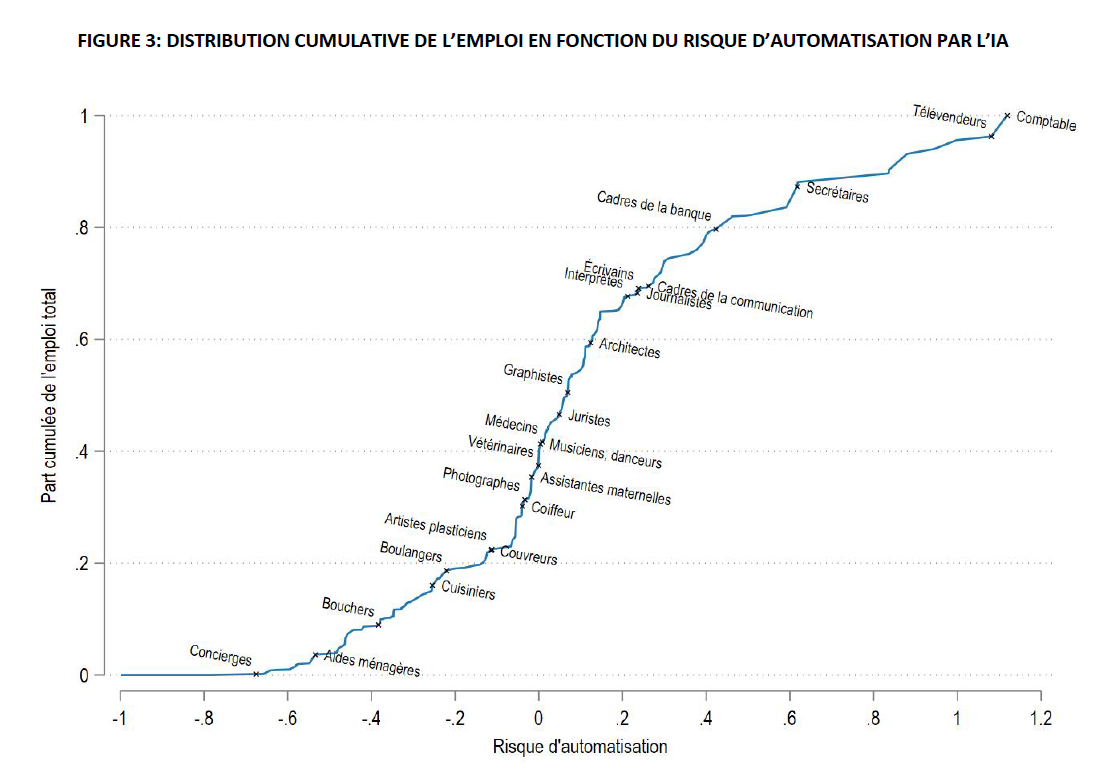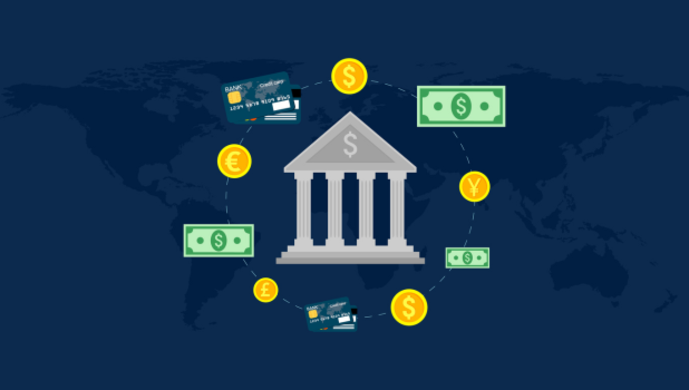First, why study the effects of AI on employment?
Many economists perceive the rapid development of AI as a major technological revolution. Yet, there is no real consensus on its consequences for productivity and employment.
From an economic point of view, it is important to study the effect of AI on labor productivity and employment, including reallocations, employee characteristics, and the professions involved. Understanding whether AI primarily impacts certain tasks rather than entire jobs is essential.
Understanding whether AI primarily impacts certain tasks rather than entire jobs is essential.
Indeed, AI could accelerate the obsolescence of human capital and transform working methods, raising questions about the evolution of wages and employees' bargaining power.
By facilitating task automation, AI could negatively affect labor demand in certain sectors, where some tasks would now be performed by machines.
On the other hand, AI could also lead to significant productivity gains and job creation in complementary sectors.
Studies in France and the United States highlight job creation and the need for training
In the United States, in 2023, a study by the National Bureau of Economic Research showed that implementing an AI tool to assist customer service employees in responding to inquiries increased their productivity by 25%. This productivity increase far outpaces eliminating certain positions, as AI can also improve workers' performance.
In France, the report submitted to Emmanuel Macron by the Committee on Generative Artificial Intelligence on March 13, 2024, also explains that AI could have a positive impact on employment, but only if its dissemination is accompanied by investments in training and better inclusion of staff representatives.
The study, like Bergeaud's, is based on data from INSEE, the French National Institute of Statistics and Economic Studies, showing that companies that adopted AI systems between 2018 and 2020 saw their employment numbers increase faster than those that did not adopt these technologies. These new technologies have thus created jobs that did not exist before 2018.
In his January 2024 note, Antonin Bergeaud concludes that automation could affect about 20% of workers, with a high prevalence among managers. The researcher focused on precisely analyzing the tasks performed by an average employee in 220 different professions, which allowed him to identify the professions likely to be highly automated and those that would benefit in terms of productivity and new skills.
Methodology and data
The Commission chaired by Aghion and Bouverot and Bergeaud use the same method and data. To evaluate the impact of AI, Antonin Bergeaud analyzed 16,937 tasks related to 220 professions from the O*NET database. For each task, he applied the GPT-4 model with specific instructions (or prompts) and assigned a score to measure the potential for substitutability, that is, the likelihood that the task could be performed by AI in the near future. By integrating the potentials for substitution and complementarity (if AI collaborates with a human to enhance their skills), he calculated the proportion of tasks difficult to automate for each profession.
Between 10% and 20% of employment are at risk with AI, which is a lot, but less than some alarmist discourses suggest when they talk about a near-total disappearance of employment.
The professor details the limitations of these analyses: "In practice, what we can do is evaluate a kind of exposure score to AI profession by profession. Besides, the question we cannot definitively answer is 'where to set the threshold to determine that a job is at risk?' In my note and the report, the threshold has likely been set at different points, but we can say that the magnitude is between 10% and 20% of employment, which is a lot, but less than some alarmist discourses suggest when they talk about a near-total disappearance of employment."
The most impacted professions
Bergeaud thus finds that professions like secretaries, accountants, and telemarketers, which are highly exposed to AI and involve few complex tasks, are the most threatened. Other professions will also be transformed, even if they are not entirely replaced. Conversely, manual jobs, such as roofer, or relational ones, such as concierge, should be little affected by these transformations.
Figure 3, extracted from Bergeaud's note: Cumulative distribution of employment based on the risk of automation by AI.
Overall, Bergeaud estimates that the impact of AI should be positive due to significant time savings.
The EU develops the AI Act to protect work from AI
The development of AI also raises crucial questions about the evolution of employment and its legal framework. In response to these concerns, the European Union is preparing the Artificial Intelligence Act, a legal framework that aims to regulate AI uses, particularly in relation to employment. This framework imposes specific obligations on AI system providers based on the potential risks of their uses, categorizing, for example, AI systems related to employment as high-risk. It still needs to be formally adopted before its progressive entry into force starting in 2025.
In a nutshell
The study conducted by Antonin Bergeaud provides a nuanced view of the impact of AI on employment in France. Although 20% of jobs could be heavily impacted, AI also offers significant opportunities in terms of productivity gains and new job creation.
The importance of training and the inclusion of staff representatives is crucial to support this transition.
The development of AI must also be accompanied by an appropriate legal framework to ensure the ethical and secure use of these technologies.
Finally, by investing in research and training, France can leverage AI to improve productivity and create jobs while minimizing the risks of excessive automation.








